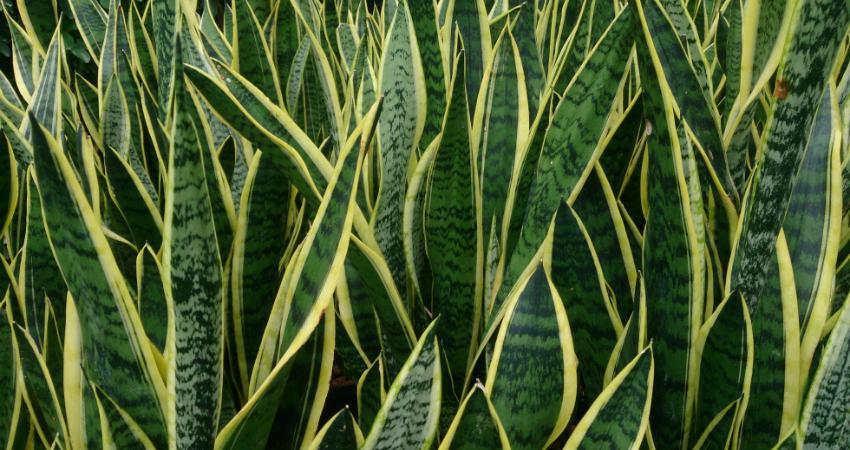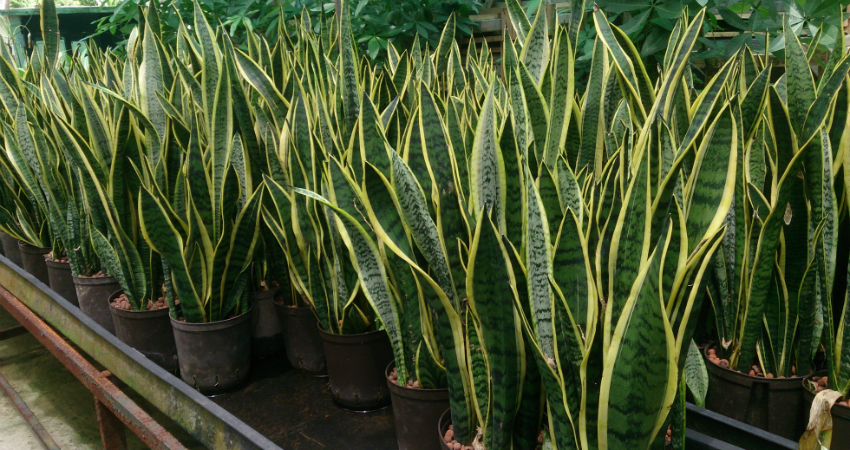The Sansevieria is the perfect addition to any indoor garden setting. It is a stemless evergreen perennial plant.Sansevieria trifasciata is a species of foliage plant in the family Asparagaceae. Leaves are erect, fleshy, sharply-pointed, sword-shaped, deep green with light gray-green horizontal stripes. Leaves arise in a rosette from a thick rhizome. Small fragrant greenish-white flowers bloom on mature plants. Flowers and fruit rarely appear on indoor plants.
The Snake plant purifies the air by absorbing toxins through the leaves and producing pure oxygen. In fact, Sansevieria is an ideal houseplant.
PLANTING AND CARE
Snake plants produce rhizomes and are easily divided. Although this can be done any time, spring is best. Your newly propagated plants will also grow faster as summer is growing season.You can also propagate snake plants through leaf cuttings. Just cut 2 to 3-inch pieces of a leaf and place them about 1 inch deep in soil appropriate for snake plants. Make sure to plant cuttings facing up, the same direction they were growing.
CARE
Water only when the top 2 or 3 inches of soil is completely dry, and then water deeply until water runs through the drainage hole. Although conditions vary, a plant near a sunny window will need water more frequently. However, many people find that watering every two or three weeks is adequate.
The saying goes that Sansevieria is so hardy it can even grow in a closet, but droopy snake plant leaves may result if the plant is in excessive darkness for long periods of time. The pattern in the leaves also tends to be more bright and prominent when the plant is exposed to light. Indirect sunlight works best for them.
A little general purpose fertilizer can be used if the plants are in a pot, and that’s about it.


![]()